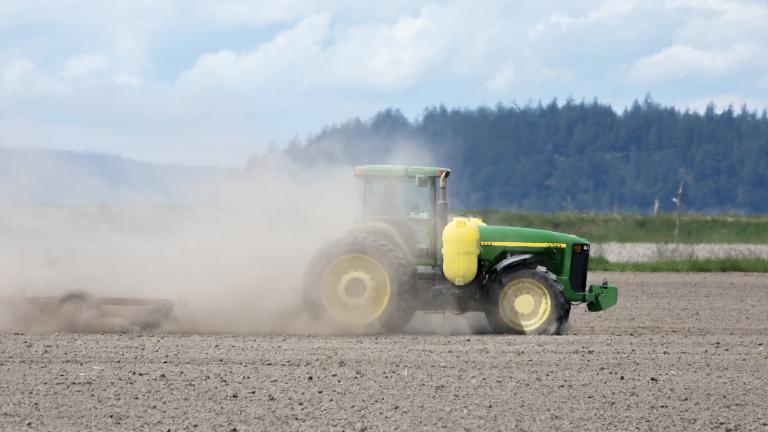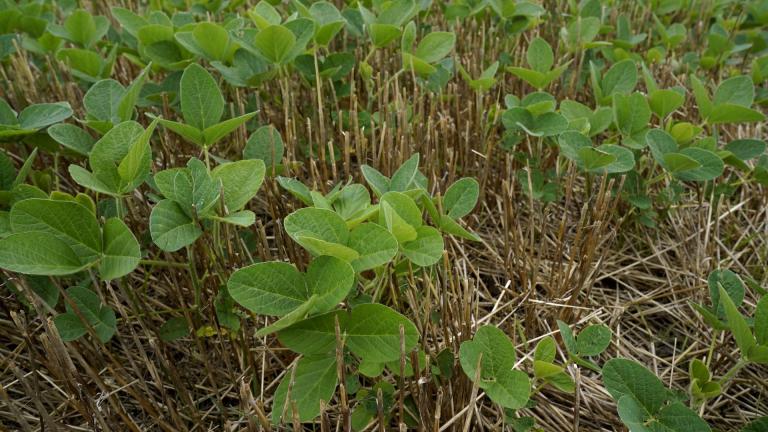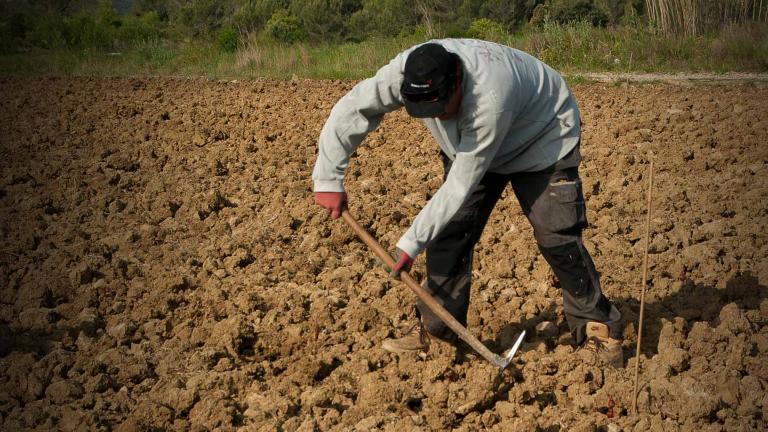 Corn infected with bacterial leaf streak. The long lesions on the leaf are symptoms of the disease. (Nicole E. Furlan / USDA-APHIS-PPQ)
Corn infected with bacterial leaf streak. The long lesions on the leaf are symptoms of the disease. (Nicole E. Furlan / USDA-APHIS-PPQ)
A new bacterial disease infecting corn crops has been confirmed in Illinois after it was detected in several neighboring states.
Researchers know very little about the disease, called bacterial leaf streak, or what impact it could have on the agricultural industry.
A single sample of corn from a farm in DeKalb County tested positive for the disease after 340 randomly selected cornfields in two-thirds of the state’s counties were surveyed. Cook County was not among the areas tested for the disease.
The U.S. Department of Agriculture does not believe bacterial leaf streak poses a risk to human or animal health and has not issued a quarantine on corn traded domestically or internationally.
The agency also noted there’s no evidence it will impact this year’s corn production.
The research was conducted in August by the USDA’s Animal and Plant Health Inspection Service, Illinois Department of Agriculture, Illinois Natural History Survey and the University of Illinois Extension.
Russ Higgins, a University of Illinois Extension crop sciences educator who participated in the survey, said trying to identify bacterial leaf streak was not easy, so researchers sent any crop samples that might be infected to the USDA for testing.
“This is a challenging disease to make a diagnosis for because it looks very similar to a common disease that infects corn called grey leaf spot,” Higgins said.
Grey leaf spot is a fungal disease, so it’s not likely that chemicals used to treat it will be effective on bacterial leaf streak.
Symptoms of infected corn are browning and discoloration of leaves and linear lesions that run along the leaf’s parallel veins.
 Cook County was not one of the 66 Illinois counties surveyed for bacterial leaf streak.
Cook County was not one of the 66 Illinois counties surveyed for bacterial leaf streak.
With the state’s corn harvest season only three to four weeks away, Higgins agrees with the USDA and hopes the problem is merely cosmetic.
“We know very little about what it does to the plant,” Higgens said. “But we don’t expect it to have any effect on the yield of the 2016 corn crop because it showed up so late in the growing season.”
Higgens was surprised the survey yielded only one sample of infected corn after a rainier-than-average season because bacterial leaf streak is reportedly exacerbated by wet and humid weather.
Bacterial leaf streak was first positively identified in corn from Nebraska by the USDA earlier in August. It’s also been found in Colorado, Iowa, Kansas, Minnesota, Nebraska, Oklahoma, South Dakota and Texas. Outside of the U.S., it’s only been reported in corn from South Africa, according to the University of Nebraska-Lincoln.
Farmers who notice the disease are encouraged to clean infected crop debris from fields and equipment because the bacterial pathogen is believed to live in the debris and spread to unaffected areas from season to season, according to the University of Nebraska-Lincoln.
Crop samples can be sent to the University of Nebraska-Lincoln's Plant and Pest Diagnostic Clinic for testing and analysis.
Follow Evan Garcia on Twitter: @EvanRGarcia
Related stories:
 Harvesting the WTTW Organic Garden
Harvesting the WTTW Organic Garden
Sept. 1: It's been a spectacular growing season in the WTTW garden. Jeanne Nolan, the Organic Gardener, joins us with tips for harvesting and preparing some of our crops, including corn, tomatoes, Mexican sour gherkins, red noodle beans and neon eggplant.
 Local Entrepreneurs Aim for Zero Waste with Plant Chicago
Local Entrepreneurs Aim for Zero Waste with Plant Chicago
July 6: On the South Side of Chicago some local entrepreneurs are repurposing an old meatpacking plant in an effort to create something very unusual – a way of doing business that creates no trash.
 EPA: Widely Used Herbicide is Harmful to Wildlife
EPA: Widely Used Herbicide is Harmful to Wildlife
June 8: Some farm groups are criticizing a new report about the hazards of atrazine, a herbicide that was banned by the European Union more than 10 years ago.








